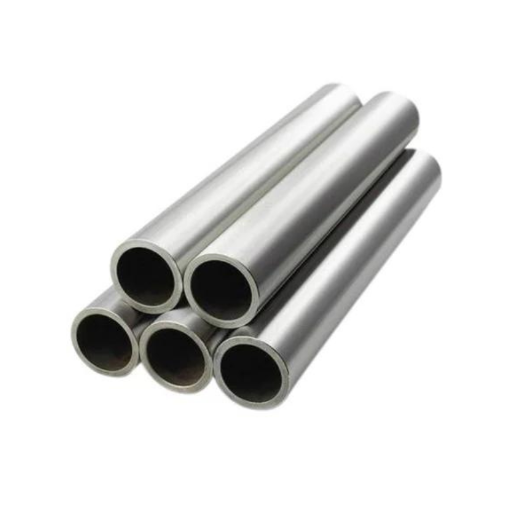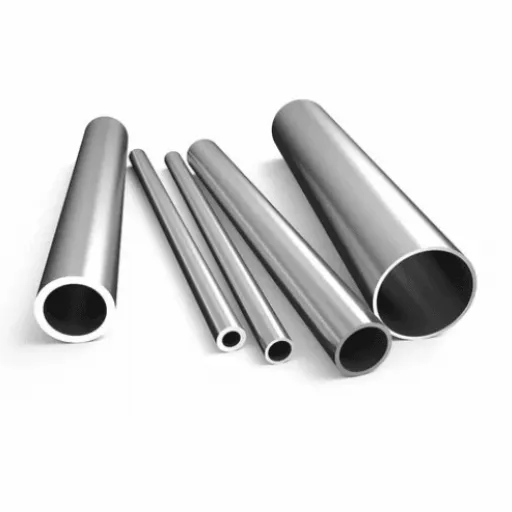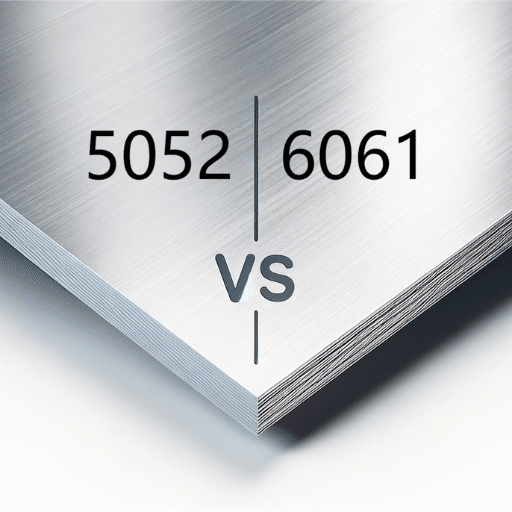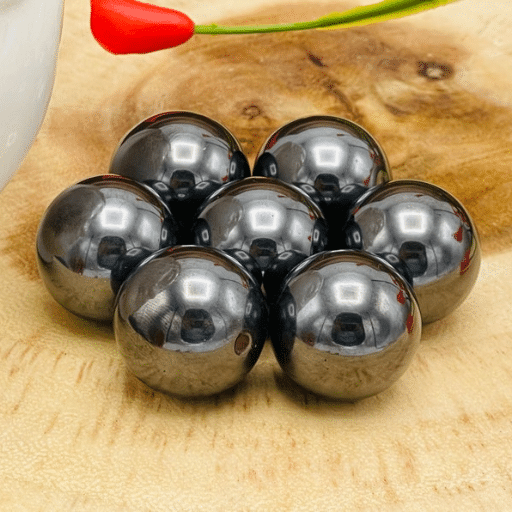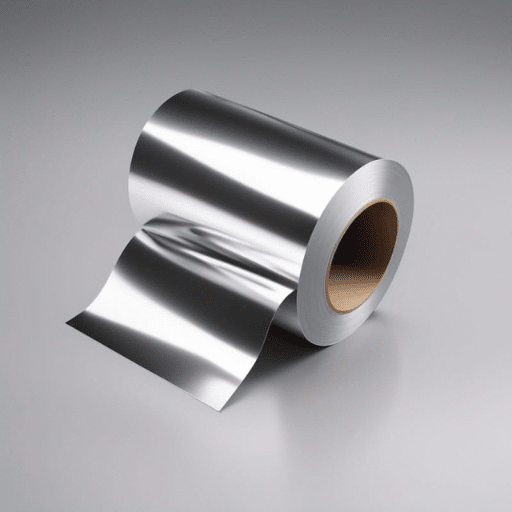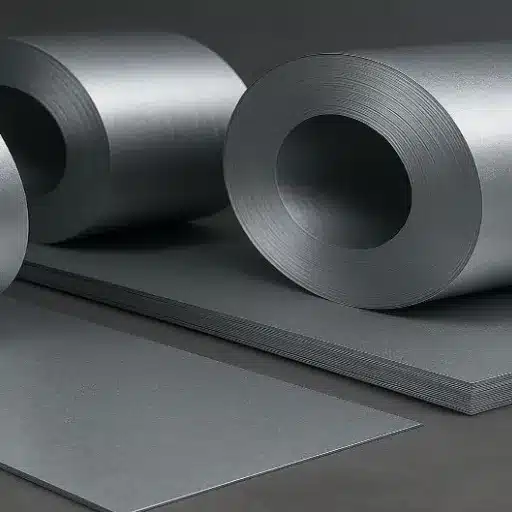Alloy 20 stainless steel, designated as CN7M, is a highly versatile and corrosion-resistant material that has carved out a significant niche in industries requiring exceptional durability and performance under extreme conditions. Known for its superior resistance to chemical attack, particularly in environments involving sulfuric acid and other aggressive compounds, this alloy has become a top choice for engineers and manufacturers. This article explores the core properties, unique composition, and wide-ranging applications of CN7M, shedding light on why it stands out in the realm of specialty alloys. Whether you’re a materials scientist, an industrial professional, or simply curious about advanced engineering materials, this guide will provide valuable insights into how Alloy 20 stainless steel pushes the boundaries of modern material science.
Introduction to CN7M and Alloy 20

What is cn7m?
CN7M belongs to the highly specialized flameable cast stainless steel of the Alloy 20 family, which is well known for its retention of superior resistance to corrosion that would lead to tarnishing under different conditions. CN7M was specially designed for sulfuric-acid-containing environments and exhibits a higher performance rating than other materials in acidic, salty, and sometimes chlorinated areas. It is an austenitic alloy having nickel, chromium, iron, and molybdenum in its composition, thus imparting outstanding mechanical properties coupled with chemical resistance.
CN7M’s chemical composition denotes high corrosion-resisting properties. With such key elements as nickel (32-38%), chromium (19-21%), and molybdenum (2-3%), the metals work synergistically to provide a stable and durable grade against harsh chemical exposures. Its low carbon content also helps prevent the risk of intergranular corrosion after welding, which is a critical aspect for long-term structural integrity. With this composition, CN7M is best suited for use in chemical, pharmaceutical, and food processing industries.
More than being chemically resistant, CN7M is also highly mechanically flexible and strong. Pumping equipment, valves, and heat exchangers operating in settings of very high corrosion make one area of application for the alloy. The alloy can withstand high temperatures. It also meets ASTM A743/A744 requirements, a certified-material specification to be used by engineers and manufacturers whenever the solution calls for very high reliability in testing from harsh working conditions. It can be considered one of the most flexible types and an all-proven performer; hence, CN7M has become a sort of industrial-recognition benchmark for specialty alloys.
Overview of Alloy 20 Stainless Steel
Alloy 20, commonly known as Carpenter 20, is a corrosion-resistant stainless steel alloy designed for use in an environment with sulfuric acid and other aggressive chemicals. While belonging to the family of austenitic stainless steel, the alloy is specifically enhanced with nickel, chromium, and molybdenum for excellent resistance to acidic and chloride stress. Consequently, Alloy 20 has been widely used in the chemical processing, pharmaceutical, and food industries.
Alloy 20 is highly resistant to attacks such as pitting and crevice corrosion, especially in conditions bearing stress corrosion cracking, in which the chloride content and pitting potential are near a critical state. Its nickel content helps to keep it from cracking in chloride solutions, while molybdenum gives resistance to localized attack. Chromium, on the other hand, ensures resistance to oxidizing chemicals under many extreme operating conditions. Alloy 20 also provides superior mechanical and corrosion resistance, and the presence of weldability features, which are required in the fabrication of complex industrial components.
This alloy meets tight industry specifications, including ASTM B463, ASTM B729, and ASTM B464, making it reliable under stringent working conditions. Its well-known uses include storage tanks, piping systems, agitators, and heat exchangers dealing with corrosive media. Hence, the combined chemical resistance and physical properties of Alloy 20 make it indispensable for the manufacturers proposing a life-honored, high-performance material, for long equipment life, and operational efficiency under harsh environments.
Importance of Non-Magnetic Properties
Magnetic properties in materials like Alloy 20 turn crucial when, under certain circumstances, magnetic interference might hinder actual operations or damage very delicate equipment. Non-magnetic materials are needed in places where very strong magnetic fields have been made, like on MRI machines, electronic components, or other precision instruments. These materials uphold the advanced workings and safety tirelessly by excluding magnetic attraction or interference from their lists of hazards.
Also, non-magnetic characteristics are very much needed in the aerospace, naval, and oil and gas industries. For example, marine or subsea operations require non-magnetic alloys so that navigation systems, compasses, and sensors are not hindered, as such interference would result in inaccurate readings and compromised operation of these systems. In a similar way, during oil and gas exploration, this property is significant in downhole tools to curb magnetic anomalies during surveying and measurements.
From a different perspective, the non-magnetic feature of materials like Alloy 20 renders them more versatile in scenarios where they are required to offer both mechanical strength and corrosion resistance. These dual roles make them indispensable in the construction of components that are subjected to both chemical aggressors and weak Cl-B’am magnetic fields. Their use benefits reliability enhancements of equipment while also putting it to extended use, thereby saving a massive amount through cost savings and operational efficiency.
Chemical Composition of CN7M Steel
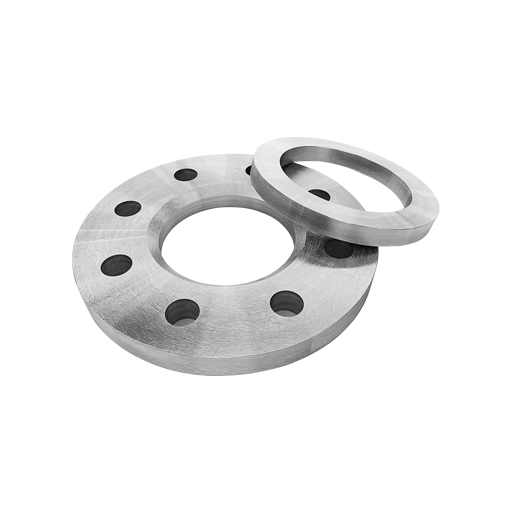
Detailed Breakdown of Chemical Composition
CN7M has a unique and highly specialized alloy that has a perfectly balanced chemical composition, granting it superior corrosion resistance and mechanical properties, making it fit for aggressive environments. The significant elements in its composition consist of:
- Chromium (19.0%-21.0%): It is chromium, which promotes the formation of a passive oxide layer over the material, resisting its oxidation and degradation by corrosive media such as acids and alkalis.
- Nickel (32.0%-37.0% ): The presence of nickel increases general toughness and further chemical resistance, especially in sulfuric acid and chloride environments. A high content of nickel may also stabilize the alloy in its austenitic microstructure.
- Iron (~Balance): With iron acting as the principal base, it provides enough structure to allow interlacing with other alloying components.
- Molybdenum (2.0% – 3.0%): Since molybdenum enhances the material’s pitting corrosion resistance, especially in chloride environments, it also contributes to its overall strength.
- Copper (3.0% – 4.0%): Copper benefits resistance to sulfuric acid and other reducing agents, thus enhancing the versatility of the alloy.
- Silicon (maximum 1.0%) and Manganese (maximum 1.0%): These chemicals assist the steel manufacturing process through deoxidization, thereby enhancing surface finish and weldability.
- Phosphorus (maximum 0.04%) and Sulfur (maximum 0.04%): These are kept at a bare minimum to avoid any hardship and reduction in mechanical properties.
This composition of elements forms the impeccable balance that endows CN7M steel with the best corrosion resistance, machinability, and tough operation conditions that the steel has to endure. It resists stress corrosion cracking, pitting, and crevice corrosion, thus making it a preferred choice for chemical processing, marine equipment manufacturing, and power generation.
Comparison with Other Alloys
It compares CN7M steel with corrosion-resistant alloys like Alloy 20, super austenitic grades 254SMO and AL-6XN, and the standard grade of austenitic steel in terms of corrosion resistance, machinability, and application.
|
Key Point |
CN7M |
Alloy 20 |
Super Austenitic |
Standard Austenitic |
|---|---|---|---|---|
|
Corrosion |
High |
High |
Superior |
Moderate |
|
Machinability |
Good |
Good |
Moderate |
High |
|
Applications |
Chemical, Marine |
Chemical, Marine |
Desalination, Marine |
General |
|
Composition |
Ni, Mo, Cu |
Ni, Mo, Cu |
Cr, Mo, N |
Cr, Ni |
|
Strength |
Moderate |
Moderate |
High |
Low |
Mechanical Properties of cn7m
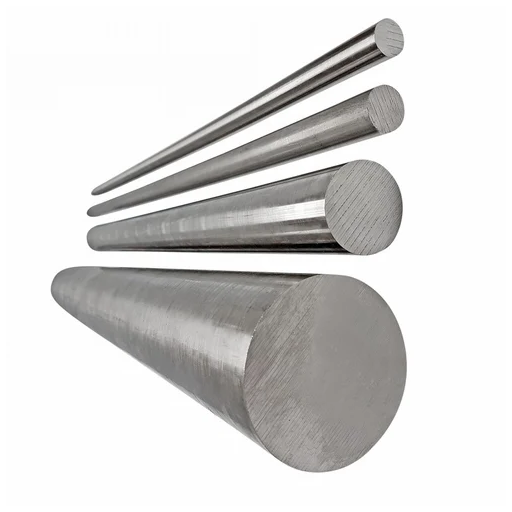
Tensile Strength and Yield Strength
CN7M is a versatile and robust material imparted with mechanical properties that can work against hostile conditions. The tensile strength of CN7M is customarily stated in a range from 70,000 to 80,000 psi, according to the kind of heat treatment imparted to the product during manufacture. This moderate tensile strength enables the CN7M material to resist deformation under heavy stress, thus being applied in many fields such as the chemical processing and marine industries. Likewise, the elongation at break-highly indicative of its ductility, usually above 30%, proving that this material can stretch and absorb energy under tensile loads without suddenly breaking.
Similarly, yield strength holds its place in analyzing the functions of the CN7M. It is commonly considered in the range of 35,000 to 40,000 psi-yield strength stands for the ability of the material to resist plastic deformation under load. This makes sure that CN7M stays intact and retains proper structural shape in situations of cycling loads, such as pump or valve parts coming into contact with highly corrosive fluids. The fact that it withstands these circumstances while effectively resisting localized corrosion, likes as pitting and crevice corrosion-further enhances its reputation.
Such mechanical properties truly make CN7M an excellent choice in applications requiring strength coupled with corrosion resistance. It’s a special breed and careful alloying consisting of nickel for toughness, molybdenum for corrosion resistance, and copper for enhanced resistance in environments with the presence of sulfuric acid truly optimizes its properties. CN7M, therefore, becomes an engineer’s choice for any difficult environment where metals are supposed to stand the pounding of mechanical stress on one side and chemical attack on the other, further accentuating suitability for critical environments like desalination plants and chemical reactors.
Impact Resistance and Toughness
CN7M’s toughness and impact resistance make it suitable for highly demanding engineering applications. Mechanically, the alloy performs very well under extreme stress and loads. The additional nickel renders the material slightly ductile, allowing CN7M to absorb a greater amount of impact energy without a single crack or break appearing. This property becomes especially important under cyclic loading or vibrational forces, where a brittle failure cannot be tolerated. Simultaneous stress is evenly distributed throughout its structure, securing prolonged material integrity, even when in thermodynamically unstable environments.
In low-temperature environments, the alloy retains its toughness very important feature of this industrial alloy for components exposed to cryogenic conditions. Molybdenum and chromium in the alloy composition largely affect the microstructure for carbide formation and stabilization, which makes it somewhat resistant against crack propagation due to sudden impacts caused by dynamic shocks; furthermore, it increases the cohesion of grain boundaries, making CN7M become one of the most confident candidates for such applications as high-pressure pump or agitator in chemical plants.
Laboratory and field data uphold the assertion made about CN7M’s superior mechanical properties-an example would be consistent Charpy V-notch impact tests, where CN7M crosses the impact toughness boundary set for safety-critical systems. This durability is further complemented by its resistance to corrosion-fatigue phenomena, rendering CN7M a material of choice when dual-stress environments cause simultaneous chemical and mechanical attacks. Due to these properties, more applications continue to favor solutions involving CN7M in industries requiring outstanding performance under operational adversity.
Thermal Properties of CN7m
Thermal properties of CN7M are of utmost importance, translating directly to performance under severe conditions. CN7M offers high thermal stability with negligible deformation and degradation at elevated temperatures. With a melting point roughly between 2,480°F and 2,620°F (1,360°C and 1,440°C), it has adequate strength to maintain its shape, cast and maintain its structural integrity in high temperatures. This, in particular, is highly desirable in heat exchangers, furnace parts, and chemical reactors, where thermal stresses exerted can be quite undesirable.
Furthermore, the material possesses a low coefficient of thermal expansion (CTE), which is a measure of dimensional change per degree temperature increase. With a lower CTE, the CN7M is more dimensionally stable during thermal cycles and, hence, avoids thermal fatigue that would maintain tight tolerance. This property allows for applications with precision fitting under high thermal cycling, such as valves and pump components in refineries and power plants.
In other words, the CN7M manages thermal conductivity to suit the requirements of heat dissipation and retention of thermal energy during operations. Because CN7M’s thermal conductivity is of moderate capacity, it helps prevent an undesirable build-up of heat in crucial applications that lead to material degradation and failure. Hence, the combination of these thermal properties, corrosion resistance, and mechanical properties determines CN7M as a dependable choice for testing thermal considerations relevant in material selection. The complete thermal resistance confidence places CN7M as preferred in system areas that require consistent and dependable performance under thermally demanding conditions.
Corrosion Resistance of Alloy 20 Stainless Steel
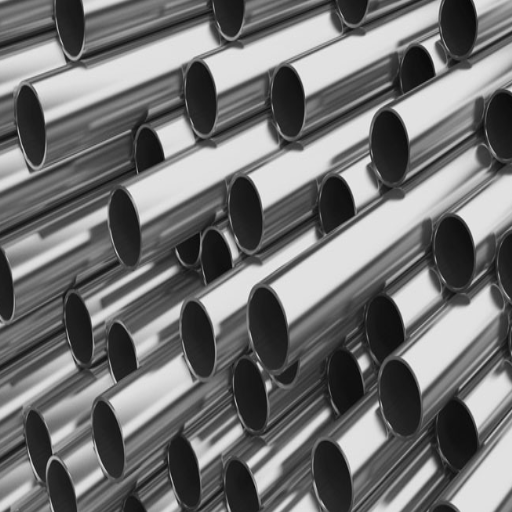
Resistance to Different Types of Corrosion
What makes Alloy 20 stainless steel well-suited to withstand unusual corrosive and environmental conditions is its complex chemical composition, including moderate to high percentages of nickel, chromium, and molybdenum. These elements confer resistance against different corrosion types, including general corrosion, pitting, crevice, and stress corrosion cracking.
- General Corrosion Resistance: Alloy 20 is resistant to sulfuric acid, therefore being highly preferred in chemical processing operations where this highly corrosive acid occurs. Tests prove this material to perform exceedingly well in both oxidizing and reducing environments by virtue of chromium for resisting oxidation and nickel for resisting reducing acid environments.
- Pitting and Crevice Corrosion: This is an alloy designed to withstand local attacks like pitting and crevice corrosion that typically occur to stainless steels in chloride-containing environments. The molybdenum addition imparts significant protection to the material when exposed to high chloride concentration, even at elevated temperatures.
- Stress Corrosion Cracking (SCC): In the presence of chlorides and tensile stresses, Alloy 20 shows resistance to stress corrosion cracking due to its nickel content. This property allows for a reliable performance in environments where standard stainless steels have a tendency to suddenly fail by cracking.
- Intergranular Corrosion: A low carbon content in Alloy 20 helps it resist carbide precipitation along the grain boundaries during welding or heat treatment, thus reducing the susceptibility to intergranular corrosion, particularly in equipment that will be used at elevated temperatures.
Extensive empirical testing under different environmental conditions confirms the fact that the unique compositional design of Alloy 20 allows it to effectively outclass many common stainless steels in aggressive chemical, petrochemical, and marine environments. Such adaptability surely guarantees wide industrial usage in sectors requiring materials with superior corrosion resistance capable of operating for long periods with practically no deterioration.
Applications in Corrosive Environments
This kind of alloy is extensively used in areas where strong acids, chlorides, and other corrosive substances are present. Its heavy nickel-chromium-molybdenum chemistry puts it in the class of materials with superior mechanical and corrosion resistance for demanding applications. The following are the five major applications of Alloy 20 in corrosive environments:
- Chemical Processing Equipment: Alloy 20 is frequently involved in the fabrication of reactors, heat exchangers, and tanks for processes involving sulfuric acid or other aggressive chemicals. Studies show that Alloy 20 performs satisfactorily in sulfuric acid solutions of up to 50% concentration at temperatures up to 120°F (49°C).
- Marine Environments: The alloy is used in components exposed to saltwater environments, such as pumps, valves, and piping systems, where stress corrosion cracking (SCC) induced by chlorides is a serious concern. Test results showed the steepest reduction in SCC-caused failures compared to regular stainless steels.
- Pharmaceutical and Food Processing: Alloy 20 is certified for uses that require hygienic properties and resistance to cleaning agents, such as acidic cleaners. With its low corrosion rates and inertness in sterilization processes, it fits the ideal bill for this industry.
- Pulp and Paper Industry: The alloy remains reliable in processes of lignin removal and cellulose processing because it resists sulfur compounds and aggressive bleaching agents. Performance studies confirm a longer operating life in these conditions compared to other alloys.
- Flue Gas Desulfurization Systems (FGD): In power plants, Alloy 20 finds use in scrubbers, blowers, and ducting for FGD application, where it further treats harsh sulfur-bearing exhaust gases effectively. According to operational data, there has been disappointingly minimal material degradation witnessed even in highly acidic environments.
These targeted applications further showcase Alloy 20 as a material of versatility for high-performance solutions in aggressive corrosive conditions.
Maintenance and Longevity
Hence, for the proper working life of Alloy 20 employed in hostile conditions, proper maintenance must always be followed. Regular inspection must ensure signs of deterioration, corrosion, or aging; in fact, proactive maintenance should check for anything affecting surfaces, especially in those areas being continually exposed to aggressive chemicals. Non-destructive evaluation methods would best suit resolving such issues, such as ultrasonic or radiographic examinations, for irregularities found on surfaces and subsurfaces that might become a problem if allowed to grow, all without causing more damage along the way.
The cleaning protocols must be transparent, given that deposits or residues may cause accelerated localized corrosion in industrial environments. Use of specialized cleaning agents compatible with the chemical resistance properties of Alloy 20, such as neutral or mild alkaline-type agents, helps preserve its integrity and prevent unnecessary deterioration.
The equipment made using Alloy 20 can serve for a considerable period if well maintained with regard to preventive measures. Thus, operational data from chemical processing plants signifies more than ten years of service life under strict scheduled maintenance application for heat exchangers and pump systems, provided Alloy 20 is utilized. This less downtime translates to lower maintenance costs, making Alloy 20 a cheaper option in the long run.
Applications of Cn7m Steel
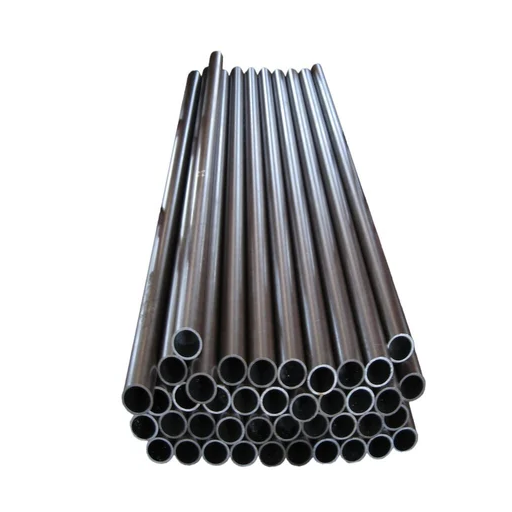
Industries Utilizing cn7m
CN7M steel is largely used wherever strong corrosion resistance against aggressive environments is required. Being truly versatile, this alloy is chiefly employed in the chemical processing industry, where resistance to sulfuric acid, chlorides, and other highly aggressive chemicals is very important since ordinary materials get destroyed within a short period. Industries in the chemical processing sector need CN7M mainly to manufacture equipment such as pumps, valves, and heat exchangers to ensure smooth production with very little chance of material failure.
The other application area is in the pharmaceutical industry. Since pharmaceutical production processes require an extensive level of cleanliness and a stringent corrosion resistance option, CN7M is always the design choice for components destined for sterile or chemically active environments. Its strength, coupled with minimal maintenance needs, makes it a solution that is quite cost-effective in terms of meeting industry standards while maintaining product integrity.
Other uses of CN7M are in wastewater treatment plants, the marine environment, and pulp and paper manufacture. These industries often deal with highly acidic or high-chloride conditions where CN7M’s unparalleled resistance to pitting and crevice corrosion comes to provide great operational advantages: working for long periods in such an unforgiving environment has made CN7M the material of choice for applications that are expected to be robust and reliable.
Future Trends in Alloy 20 Applications
The future trend in Alloy 20 will apply trends in energy advancement, environmental sustainability, and process efficiency. Demand is rising for equipment that can operate in harsh environmental conditions. Alloy 20 will emerge as a material of choice in next-generation industries such as green hydrogen production and carbon capture. Both industries require materials with a high degree of resistance to corrosive agents such as sulfuric acid, wherein the corrosion-resistant properties of Alloy 20 can be exploited.
Also, a parallel increase in demand for corrosion-resistant alloys is anticipated due to investments in renewable energy systems, with a greater emphasis put on geothermal and offshore wind energy. Alloy 20 is advantageous for these applications in that it performs well in chloride-rich and high-pressure environments, making it very useful in heat exchangers, piping systems, and turbine housings.
The advent of fabrication technologies such as additive manufacturing is further enriching the customization of Alloy 20 parts for niche applications. Optimizing thickness and geometry while retaining mechanical and chemical resistance for enhanced efficiency and reduced wastage on materials is the way forward. This is in sync with the worldwide drive toward resource optimization and reducing environmental impacts.
Lastly, the introduction of more stringent regulatory structures concerning material integrity in chemical processing and power generation promises to increase the rate of adoption of Alloy 20. There is an ever-increasing focus on those materials that provide long life, safety, and compliance concerning environmental standards, which serve to mark Alloy 20 as arguably the choice for applications necessitating top specifications.
References
-
Fundamental Metallurgical Investigations of Alloy CN-7M Weldments
This study explores metallurgical properties and challenges in casting CN7M alloy. -
Failure Analysis of Leaking Stainless Steel Pump Casing
An analysis of CN7M stainless steel pump housing failures, including chemical composition verification. -
Evaluation of Intergranular Corrosion Susceptibility in High-Alloy Austenitic Stainless Steel Casting
This paper evaluates corrosion susceptibility in CN7M and similar high-alloy stainless steels.
Frequently Asked Questions (FAQ)
Q: What is CN7M, and what are its properties?
A: CN7m is a cast austenitic stainless steel classified under ASTM A351, known for its excellent corrosion resistance, particularly in challenging chemical environments. It has a high nickel content, which enhances its ability to withstand stress-corrosion cracking, making it suitable for various applications, including heat exchanger parts and industrial valves.
Q: How does CN7m compare to other austenitic stainless steels?
A: Compared to other austenitic stainless steels, CN7M exhibits superior resistance to chloride-induced corrosion due to its unique chemical makeup. This makes it particularly effective in marine applications and environments that require long-term performance under harsh conditions.
Q: What industries commonly use CN7M?
A: CN7m is widely utilized in different industries, including chemical processing, marine applications, and alloy casting industries. Its exceptional resistance to corrosion and high levels of nickel and chromium make it ideal for valve components and tank accessories.
Q: What are the applications of CN7m in chemical environments?
A: CN7m is frequently used in various applications in chemical environments, especially where reducing chemicals are present. Its ability to resist corrosion and maintain integrity in harsh conditions makes it a preferred choice for flange fittings and piping systems.
Q: What is the significance of solution annealing for CN7m?
A: Solution annealing is a heat treatment process that enhances the material properties of CN7M. This process helps in relieving stress, reducing sensitization, and improving the overall corrosion resistance, ensuring the material performs optimally in its intended applications.
Q: Can you explain the chemical makeup of CN7M?
A: The chemical makeup of CN7M includes high levels of nickel and chromium, which contribute to its excellent corrosion resistance. Additionally, it has a higher molybdenum content compared to other alloys, further enhancing its performance characteristics in aggressive environments.
Q: What are the advantages of using CN7M in heat exchanger parts?
A: The use of CN7M in heat exchanger parts offers several advantages, including exceptional resistance to chloride-induced corrosion and stress-corrosion cracking. Its durability and ability to withstand high temperatures make it suitable for long-term performance in demanding applications.
Q: How does cn7m perform in terms of heat tolerance?
A: cn7m exhibits excellent heat tolerance, making it suitable for applications that involve elevated temperatures. Its austenitic structure allows it to maintain its mechanical properties and resist deformation, ensuring reliability in high-temperature environments.
Q: What is the role of copper content in CN7M?
A: The copper content in CN7m enhances its overall corrosion resistance and contributes to its strength. This characteristic is particularly beneficial in applications that require materials to withstand aggressive chemical exposures while maintaining structural integrity.

